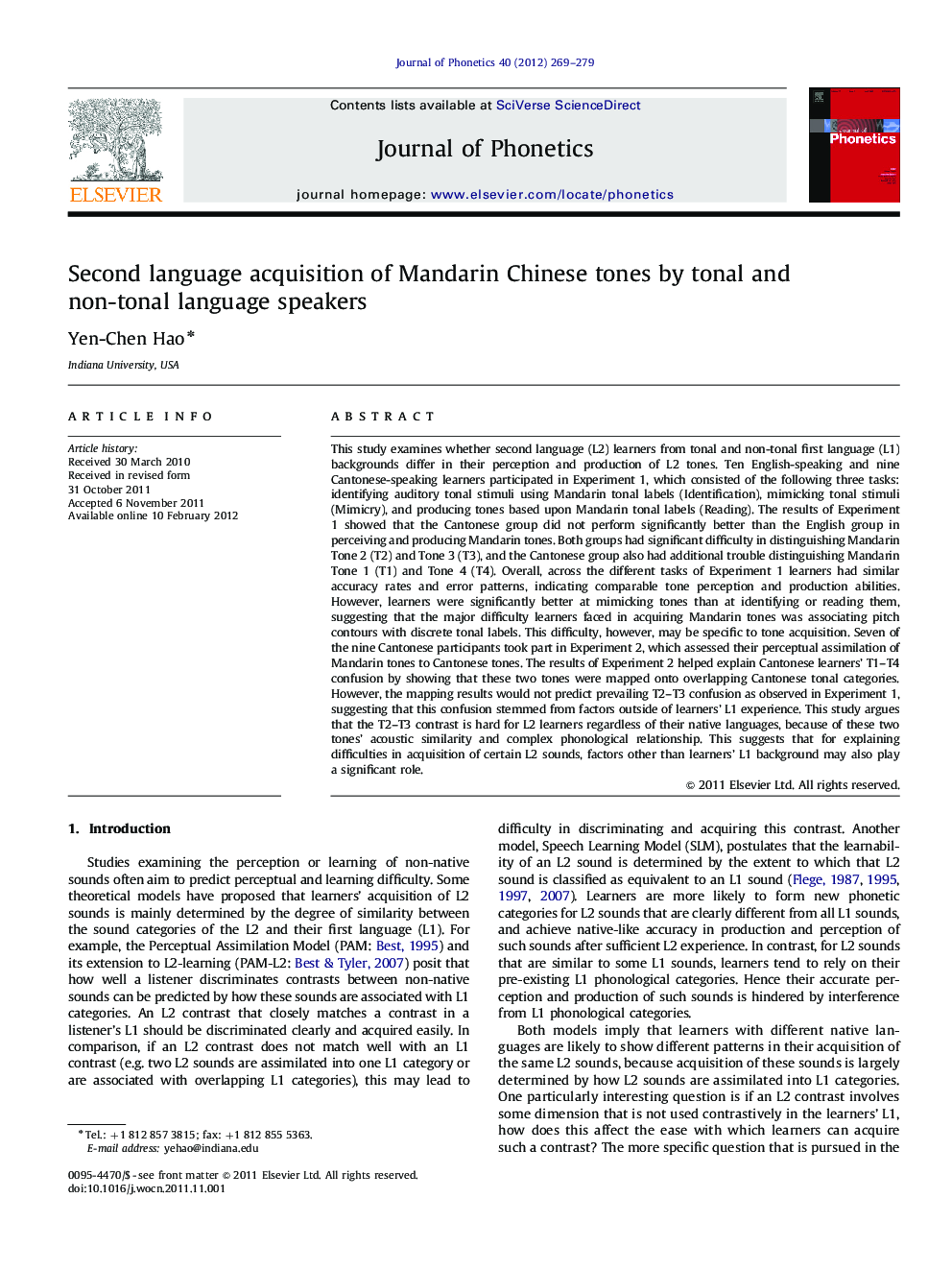| Article ID | Journal | Published Year | Pages | File Type |
|---|---|---|---|---|
| 1101036 | Journal of Phonetics | 2012 | 11 Pages |
This study examines whether second language (L2) learners from tonal and non-tonal first language (L1) backgrounds differ in their perception and production of L2 tones. Ten English-speaking and nine Cantonese-speaking learners participated in Experiment 1, which consisted of the following three tasks: identifying auditory tonal stimuli using Mandarin tonal labels (Identification), mimicking tonal stimuli (Mimicry), and producing tones based upon Mandarin tonal labels (Reading). The results of Experiment 1 showed that the Cantonese group did not perform significantly better than the English group in perceiving and producing Mandarin tones. Both groups had significant difficulty in distinguishing Mandarin Tone 2 (T2) and Tone 3 (T3), and the Cantonese group also had additional trouble distinguishing Mandarin Tone 1 (T1) and Tone 4 (T4). Overall, across the different tasks of Experiment 1 learners had similar accuracy rates and error patterns, indicating comparable tone perception and production abilities. However, learners were significantly better at mimicking tones than at identifying or reading them, suggesting that the major difficulty learners faced in acquiring Mandarin tones was associating pitch contours with discrete tonal labels. This difficulty, however, may be specific to tone acquisition. Seven of the nine Cantonese participants took part in Experiment 2, which assessed their perceptual assimilation of Mandarin tones to Cantonese tones. The results of Experiment 2 helped explain Cantonese learners' T1–T4 confusion by showing that these two tones were mapped onto overlapping Cantonese tonal categories. However, the mapping results would not predict prevailing T2–T3 confusion as observed in Experiment 1, suggesting that this confusion stemmed from factors outside of learners' L1 experience. This study argues that the T2–T3 contrast is hard for L2 learners regardless of their native languages, because of these two tones' acoustic similarity and complex phonological relationship. This suggests that for explaining difficulties in acquisition of certain L2 sounds, factors other than learners' L1 background may also play a significant role.
► This study compares L2 tone perception and production by tonal L1 and non-tonal L1 speakers. ► The English and Cantonese groups did not differ in their overall accuracy on Mandarin tones. ► Both groups had difficulty with T2 and T3, which is attributed to the acoustic similarity of this pair. ► The Cantonese group had additional T1–T4 confusion, which is attributed to the L1 interference. ► Acoustic features of L2 sounds and L1 interference are both crucial to account for L2 difficulty.
